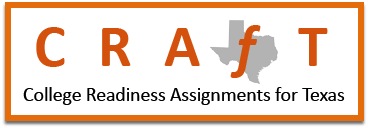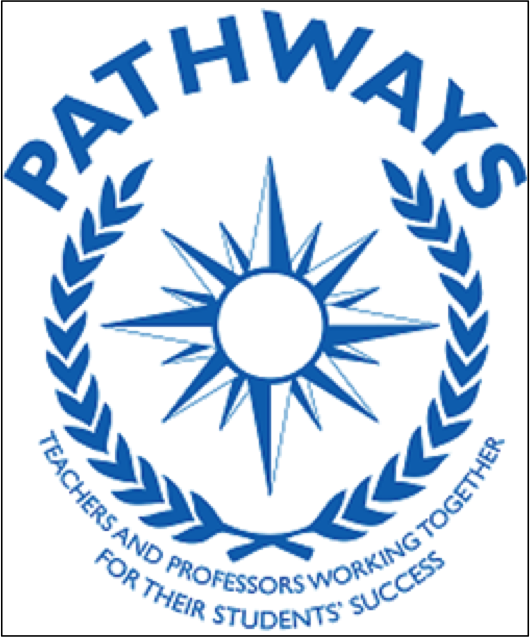Results of AVATAR Regional College Preparatory Course Survey
March 2015 | University of North Texas
BY: Mary Harris and Jean Keller
Introduction
The Academic Vertical Alignment Training and Renewal (AVATAR) College Preparatory Course Project is active in all 20 of the Texas Education Agency (TEA) regions throughout the state of Texas. In this project, College Preparatory Course (CPC) refers to the transitional courses in Mathematics and English Language Arts (ELA) mandated in House Bill 5 for offering by each school district in 2014-15. These courses are intended for high school students [who are] not college ready in English Language Arts and/or in Mathematics. CPCs are developed collaboratively by college usually 2-year college, and high school partners. The purpose of the AVATAR CPC project is to advance capacity for offering and evaluating CPCs in each region. The lead agency is typically a Regional Education Service Center (ESC).
Regional Survey
As AVATAR staff, we surveyed regional coordinators in December 2014 and February 2015. Results offer an overview of the status of CPCs in AVATAR partnerships across the state. AVATAR defines a partnership as a collaborative group composed of at least one school district, one 2-year college, one 4-year college, and one P-16 Council or other workforce group that are part of a genuine feeder pattern. These partnerships are committed to a design process that includes study of data and critical conversations. Responses to the surveys showed the progress of CPC development and delivery among AVATAR partnerships. This might not be the same as the status of a region in the offering of CPCs, due to the activity of districts and colleges not part of the designated partnerships.
Survey Results
In response to the February survey, nine regions indicated that in fall 2014, their partnerships were offering ELA and Mathematics CPCs to enrolled students. Three regions indicated that although both ELA and Mathematics CPCs had been developed by their partnerships, no students were enrolled in 2014-15, and one region reported this was so for ELA only. The remaining regions reported that their partnerships were just getting starting. Figure 1 shows the geographic distribution of these regions.
![]()
Figure 1: Regions of Texas by Status of CPC Partnerships, February 2015
Source: Survey conducted by AVATAR Project, UNT
Developed and Offered CPCs
The regions in which CPCs were offered in 2014-15 responded to questions about their courses, including estimates of the numbers of students enrolled. The largest numbers of students reported were in Region 1 and Region 19. Region 1’s partnership includes all districts and colleges in the Rio Grande Valley, and developed, offered and delivered online CPCs. In Region 19, districts and colleges in the El Paso area developed and offered CPCs face to face. Region 1 estimated 500 students enrolled in ELA and 700 in Mathematics. Region 19 reported 250 students enrolled in each of the two courses.
In general, both ELA and Mathematics courses were offered for two semesters and for high school credit that could be used as an elective in meeting graduation requirements. No dual credit was reported for courses offered by these partnerships. Most of the enrolled students were seniors, although some school districts also admitted juniors to their mathematics CPCs. All courses were taught by high school faculty with professional development provided by college personnel in some regions. Regional coordinators reported that the hardest decisions made by partnerships about the courses concerned definitions of “passing,” due in part to the possibility that passing the CPC might substitute for TSI performance in college admission. A typical passing requirement in mathematics was “70% or higher in the course and on the course final exam,” with considerable variation among regions and districts.
Developed and Not Offered CPCs
In areas where CPCs had been developed but not offered, reasons varied. Most districts reported they were “offering” the courses, but no students had enrolled. Some of these districts perceived they were not required to offer the CPCs to students in advance of the new high school graduation plans mandated by House Bill 5. Some districts were concerned about small numbers of eligible students. Although digital course delivery was a possible solution, this option was viewed by some as not the best instructional method for these particular groups of students. Some of the active CPC districts resolved the issue of small student numbers by offering CPC courses concurrently with other course offerings. For instance, CPC ELA was offered concurrently with English III in one district.
Discussion
One pattern noted in discussion with the regional coordinators of CPC implementation across the state is the importance of college partners’ providing support for the CPCs. The CPC course provision of HB5 offers an opportunity for students who are coming late to the realization that college matters or who know the content but are not good test-takers to enter a Texas college with TSI exemption. Where colleges were able to reach out to these students in ways that enabled school districts to overcome disincentives, CPCs are beginning to be implemented in ways that have potential for more students to leave high school college ready and with the support of a local secondary, post-secondary, and workforce partnership. AVATAR is working throughout the state to develop partnerships that support the students eligible for the transitional courses addressed by the CPC provision of HB5.
Conclusion
AVATAR will continue its survey process and share statewide information through the TXCCRN Digest.


 Show Printable Version
Show Printable Version




